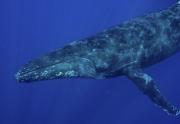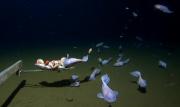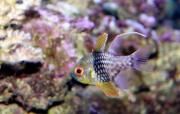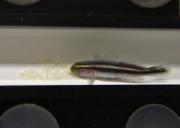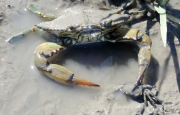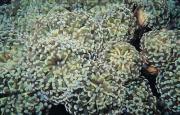It’s not just whales that migrate thousands of miles across the seas. The songs they sing can cover long distances too. Several recent studies reveal more insight into the hauntingly beautiful and complex musical arrangements of male humpback whales, including just how far the repeating “themes” of their songs can travel.
Articles
The Marine Science Institute's monthly column, Science and the SeaTM, is an informative and entertaining article that explains many interesting features of the marine environment and the creatures that live there. Science and the SeaTM articles appear monthly in one of Texas' most widely read fishing magazines, Texas Saltwater Fishing, the Port Aransas South Jetty newspaper, the Flour Bluff News, and the Island Moon newspaper. Our article archive is available also on our website.
As you go further and further into the ocean’s depths, you pass through different zones named for the increasing darkness, from the sunlight zone to the twilight zone, to the midnight zone, to the abyssal zone, to the absolute deepest points in the oceans—the hadal zone. The hadal zone is named for Hades, the Greek god of the underworld, and it stretches from 20,000 feet to as deep as 36,000 feet—nearly 7 miles—below the surface, at the bottom of the deepest trenches.
Many marine creatures are monogamous, from butterflyfish and French angelfish to mantis shrimp and seahorses. But even monogamous species may have a wandering eye at times. That seems to be true for the pajama cardinalfish, a small coral reef fish found throughout the western Pacific Ocean. It’s best known for the males storing fertilized eggs in their mouth until the offspring are ready to leave.
A colony of garden eels often looks at first like sea grass swaying in the current—until you get closer. As you approach, you might get a glimpse of the big googly-like eyes on either side of their pencil-thin bodies before they disappear into the safety of their burrow. Though social animals, each eel remains rooted to the burrow its muscular tail carved out of the sand. Glands in their skin secrete a mucus that fortifies the sand around their burrow and seals the entrance when they dart in to avoid danger.
They don’t have the same incredible sense of smell and ability to sense electrical activity of nearby prey that sharks have. They don’t have the phenomenal eyesight of mantis shrimps, which can see far more colors than humans can. And they don’t use echolocation like dolphins and whales. So what secret weapon do seals use to find their prey in the dark waters of the sea? The answer might tickle your fancy: it’s their whiskers!
Many species of egg-laying animals decide when it’s time for their offspring to leave the nest, but a little fish known as the neon goby takes that a step further. They decide when their young will even hatch from their eggs. Leaving their eggs is a precarious time for any animal because the new hatchlings are at their most vulnerable. Typically, the timing of hatching depends on the embryo or on external environmental cues, such as temperature. But for neon gobies, fathers seem to know the best time to introduce their little ones to the world.
Great whites, makos, blue sharks—these are a handful of the shark species that migrate thousands of miles each year, but scientists have struggled to figure out how these sharks know how to get where they’re going. A study with more than a dozen juvenile bonnethead sharks has finally offered some answers. Sharks, like sea turtles, appear to use the Earth’s magnetic field to navigate the seas.
For years, scientists have believed that low tide provided fiddler crabs with a refuge from predatory blue crabs because the fiddlers could crawl around on the mud, out of the water where the danger lurked. But, new observations at a Virginia salt marsh suggest that blue crabs have a few surprises up their claws when it comes to hunting for dinner during low tide. Researchers watched as blue crabs hid out in shallow mud pits filled with sea water and waited, not for the tide to return, but for fiddler crabs to inch their way closer to the edge of the pit.
A key aspect of sexual attraction for many animals is the involvement of pheromones—chemicals secreted by an animal that other members of that species respond to. It’s no different for lampreys, an eel-shaped parasitic fish with a formidable suction-cup mouth. For these creatures, what attracts female lampreys to potential mates is the enticing smell of sperm. A compound called spermine is present in the semen of a wide range of animals, including humans, but scientists have only recently discovered that spermine is a strong aphrodisiac for female lampreys that are ready to mate.
Deep below the ocean’s surface, some corals emit an otherworldly glow called fluorescence, but for years, scientists have wondered about the purpose of these glowing colors. Among the hypotheses biologists have proposed is that fluorescence might optimize photosynthesis, shield against the sun’s radiation, protect plant-eating marine life that lives among the corals, or attract algae that live inside the coral and provide them with energy through photosynthesis. Now, researchers have come up with a different hypothesis: fluorescence attracts the plankton that corals capture and eat.

